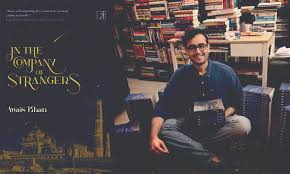Unstable Homes, Unstable Lives: A Psychogeographic Exploration of Gentrification in Awais Khan’s In the Company of Strangers
الكلمات المفتاحية:
Psychogeography، Gentrification، Cartography، In the Company of Strangersالملخص
Spaces are never neutral; they actively shape an individual’s consciousness. In the wake of gentrification, these spaces become sites of exclusion, moral decay, and profound loss, where individuals struggle to maintain their sense of self amid shifting social and spatial orders. This article examines Awais Khan’s In the Company of Strangers (2019) through the intersecting lenses of Guy Debord’s concept of psychogeography and Sharon Zukin’s theory of gentrification to explore how urban spatial transformation in Lahore disrupts the psychological and moral integrity of the character(s). The study argues that gentrified spaces are not merely physical constructs but also psychogeographic forces that shape consciousness, manipulate desire, and erode individual agency. The research employs textual analysis, and looks into how Khan uses figurative language, spatial metaphors, visual motifs, and irony to depict the city as both seductive and alienating. Ali’s journey shows how gentrified spaces, built to serve the rich, lead the poor into confusion and loss. Drawn by false hopes of a better life, he becomes trapped in a city that controls his choices and slowly breaks down his sense of self. Moreover, this article argues that Khan’s portrayal of Lahore transforms the city into a symbolic landscape, where gentrification operates as psychological violence and leads to Ali’s tragic unravelling and eventual death.
التنزيلات
المراجع
1. Ahsan, M. (2020, July 12). In the company of strangers. https://mansourahsan.com/2019/08/01/in-the-company-of-strangers/
2. Belsey, C. (2013). Textual analysis as a research method. In G. Griffin (Ed.), Research methods for English studies (2nd ed., pp. 160–178). Edinburgh University Press. https://www.jstor.org/stable/10.3366/j.ctt1g0b4xz.12
3. Danielle. (2020, January 3). Review: In the company of strangers by Awais Khan. The Reading Closet. https://thereadingcloset.home.blog/2020/01/13/review-in-company-of-strangers-by-awais-khan-awaiskhanauthor-inthecompanyofstrangers-bookguildsimonschusterin/
4. Debord, G. (1981). Introduction to a critique of urban geography (K. Knabb, Trans.; Original work published 1955). https://www.bopsecrets.org/SI/urbgeog.htm
5. Debord, D. (2008). The right to the city. New Left Review, 53, 23–40.
6. Donnelly, K. (2018). The gentrifier’s dilemma: Narrative strategies and self-justifications of incoming residents in Bedford–Stuyvesant, Brooklyn. City & Community, 17(2), 374–393. https://doi.org/10.1111/cico.12296
7. Freeman, L. (2006). There goes the ’hood: Views of gentrification from the ground up. University of Chicago Press.
8. Fujitsuka, Y. (2007). Gentrification and neighbourhood dynamics in Japan: The case of Kyoto. In D. R. Goldfield (Ed.), Encyclopedia of American urban history. SAGE Publications.
9. Heidegger, M. (1977). Sein und Zeit. Vittorio Klostermann.
10. Hussein, A. (2012). Pakistani English literature. Journal of Postcolonial Writing, 48(5), 485–496.
11. Jera’s Jamboree. (2022, September 7). Book review: In the company of strangers: Awais Khan. https://www.jerasjamboree.co.uk/literary-fiction-in-the-company-of-strangers-awaiskhan/ Retrieved May 27, 2025.
12. Khan, A. (2020). In the company of strangers. Liberty Publishing.
13. Kim, K.-J., & Kyung, S.-C. (2011). State-facilitated gentrification in Seoul, South Korea: For whom, by whom, and with what result? Paper presented at RC21 International Conference: Social Consequences of Gentrification.
14. Leach, N. (Ed.). (2005). Rethinking architecture: A reader in cultural theory. Routledge.
15. Lees, L. (2008). Gentrification and social mixing: Towards an inclusive urban renaissance? Urban Studies, 45(12), 397–403.
16. Lees, L., Slater, T., & Wyly, E. (2007). Gentrification. Routledge.
17. Lefebvre, H. (1991). The production of space (D. Nicholson-Smith, Trans.). Blackwell.
18. Mahmood, B., Asim, M., Khan, M. J., & Nawaz, M. H. (2021, October 28). Book review: In the company of strangers. Minute Mirror. https://minutemirror.com.pk/book-review-in-the-company-of-strangers-8075/
19. Moore, R. (n.d.). Understanding gentrification in Southeast and East Asia. (Working paper).
20. Peacock, J. H. (2019). Those the dead left behind: Gentrification and haunting in contemporary Brooklyn fictions. Studies in American Fiction, 47(2), 161–188.
21. Reilly, C. (2017). Cityscapes and city spaces—Representations of gentrifying New York in novel and film (Master’s thesis). Utrecht University.
22. Sabir, M. R., Asim, M., Khan, M. J., & Nawaz, M. H. (2024). Exploring echoes of empowerment and androcentrism: A feminist study of Awais Khan’s In the Company of Strangers. International Journal of Literature and Languages, 4(9), 12–19. https://doi.org/10.37547/ijll/Volume04Issue09-03
23. Slater, T. (2011). Gentrification of the city. In G. Bridge & S. Watson (Eds.), The new Blackwell companion to the city (pp. 571–585). Wiley-Blackwell. https://doi.org/10.1002/9781444395105.ch50
24. Smith, N. (1979). Toward a theory of gentrification: A back to the city movement by capital, not people. Journal of the American Planning Association, 45(4), 538–548. https://doi.org/10.1080/01944367908977002
25. Uzma Aslam Khan, U. (2017). The golden legend. Viking.
26. Zafar, H. M. J., Nasir, M., & Sadiq, R. A. (2023). A Marxist analysis of In the Company of Strangers by Awais Khan. Annals of Human and Social Sciences, 4(2), 708–717.
27. Zukin, S. (2009). Naked city: The death and life of authentic urban places. Oxford University Press.

التنزيلات
منشور
إصدار
القسم
الرخصة
الحقوق الفكرية (c) 2025 Scholar Insight Journal

هذا العمل مرخص بموجب Creative Commons Attribution 4.0 International License.
Authors retain the copyright of their work. All articles in Scholar Insight Journal are published under the terms of the Creative Commons Attribution 4.0 International License (CC BY 4.0).
This license permits anyone to read, download, copy, distribute, print, search, or link to the full texts of the articles, and to use them for any other lawful purpose, without asking prior permission from the author(s) or the publisher, provided proper attribution is given to the original work.




